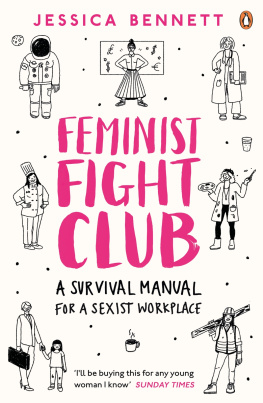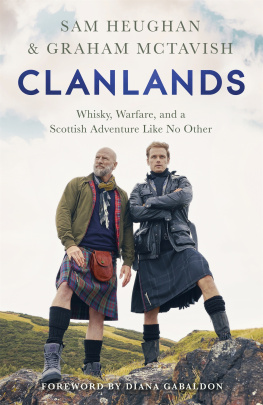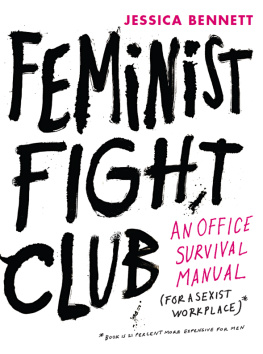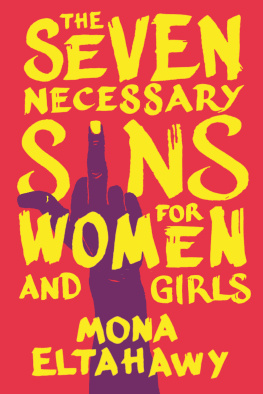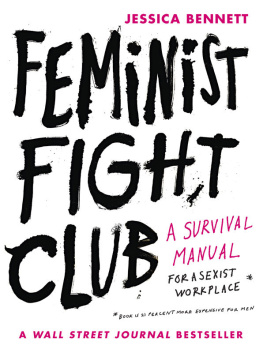Lianne McTavish onstage in June 2011. Photo by David Ford.
Feminist Figure Girl
FEMINIST FIGURE GIRL
Look Hot While You Fight the Patriarchy
Lianne McTavish
Original cover image Patrick J. Reed
Published by State University of New York Press, Albany
2015 State University of New York
All rights reserved
Printed in the United States of America
No part of this book may be used or reproduced in any manner whatsoever without written permission. No part of this book may be stored in a retrieval system or transmitted in any form or by any means including electronic, electrostatic, magnetic tape, mechanical, photocopying, recording, or otherwise without the prior permission in writing of the publisher.
For information, contact State University of New York Press, Albany, NY
www.sunypress.edu
Production, Jenn Bennett
Marketing, Fran Keneston
Library of Congress Cataloging-in-Publication Data
McTavish, Lianne, 1967
Feminist figure girl : look hot while you fight the patriarchy / Lianne McTavish.
pages cm
Includes bibliographical references and index.
ISBN 978-1-4384-5476-4 (pbk. : alk. paper) ISBN 978-1-4384-5477-1 (hardcover : alk. paper) ISBN 978-1-4384-5478-8 (ebook) 1. FeminismHistory21st century. 2. Feminism and sports. 3. Women bodybuilders. I. Title.
HQ1155.M38 2015
305.4209dc23
2014008112
10 9 8 7 6 5 4 3 2 1
For my inspirational trainers:
Gillian Kovack (IFBB Pro Heavyweight Bodybuilder)
and Audrey Shepherd (Monster Girl Fitness, Inc.)
Contents
Images
Acknowledgments
M ost of my research for the Feminist Figure Girl project took place at the gym, where I worked out with professional trainers and friends. Gillian Kovack, a heavyweight bodybuilder who won her IFBB Pro Card in 2011, taught me how to lift weights and guided me into the world of bodybuilding competitions. Without her friendship and intellectual engagement, this project would not have been possible. Audrey Shepherd trained me during the year leading up to my figure/bodybuilding competition, providing continual emotional support along with strenuous leg days that I wont soon forget. I received invaluable advice from my diet and posing coach, Raejha Douziech, an IFBB professional bodybuilder and figure athlete. Another central collaborator was Patrick J. Reed, a visual artist who designed the Feminist Figure Girl logo and posters and, more important, took photographs of all aspects of my research, from the meticulous food preparation to posing lessons and tanning rituals. I also appreciate the work of another designer, Jeffrey Klassen, who constructed and updated the Feminist Figure Girl blog site (feministfiguregirl.com). Many others have contributed to this blog over the years, particularly Deanna Harder, a certified trainer and figure competitor who continues to write the Ask a Trainer feature on my site. Others who have taken a special interest in Feminist Figure Girl and have written guest posts include Jody Bacso, Donica Belisle, Lorrie Egerter, Janis Finkelman, Dan Given, Ryan Hough, WhiteFeather Hunter, Kristen Hutchinson, Morris Lemire, Sasha Mullally, Anne Pratt, and Sarah Waurechen. The energetic staff at the World Health Club on Jasper Ave in Edmonton, where I now work part-time as a spin instructor, provided ongoing encouragement. I am grateful to manager Bob Langevin for allowing Patrick to photograph me working out at this gym on several occasions.
Although I did not seek external funding for this embodied research project, I did rely on the academic expertise of my colleagues at the University of Alberta. Anne Whitelaw, now at Concordia University, read and responded to multiple versions of every chapter of this book. The members of my writing group, Julie Rak, Liz Czach, and Amy Kaler, provided insightful commentary on some early chapters, while my queer studies reading group critiqued appeared in Topia: Canadian Journal of Canadian Studies ; I include that material here with permission. I must also recognize the contributions of Beth Bouloukos, the Acquisitions Editor at SUNY Press who realized and promoted the value of my manuscript, along with the anonymous external referees who offered insightful criticism of it.
Many friends and family members provided invaluable assistance, including Kelly-Jo Aldworth, Ryan Arcand, Sjoukje Bouma, Judy Burwell, Elaine Cardinal, Faith Cardinal, Janice Wright Cheney, Danielle Comeau, Peggy Cooke, Julian Forrest, Lisa Given, Nicole Glenn, Simone Leibovitch, Beverly Lemire, Lisa Prins, Glenda Turner, Steve Turner, Toccara Winterhawk, and all the readers of my blog. I owe, however, my greatest debt to Lee Spence, my long-suffering partner of twenty-seven years, who endures with good nature my maniacal bursts of energy. Finally, I can scarcely forget our future son who, though not yet born, is currently making his presence known as I embark on my next body project.
Introduction
Becoming Feminist Figure Girl
We rise to the challenge of movement.
Stacy Holman Jones
I t is December 12, 2009, and I am at the gym, feeling euphoric. I am pumping away on the elliptical machine with the resistance level set at sixteen and Nirvanas Live at Reading pounding in my ears. Since I have already completed an hour-long upper-body session with my personal trainer, my workout is almost done, but I dont want to leave. I close my eyes and savor the intense endorphin rush that washes over me. I am a forty-two-year-old woman who has achieved many goalsdefending a doctoral thesis, writing books, and rising to the level of full professor by age thirty-nine. Yet none of them is as satisfying to me as building muscle and losing fat. What in the hell is going on here?
In this book I will attempt to answer this question as I consider why bodybuilding could be more rewarding than other professional or intellectual accomplishments. I devised the Feminist Figure Girl project, as well as a weekly blog ( I combined personal observation with research about health policy, feminist theory, and the politics of space to examine how every Tuesday morning, when appointments were held, the perimeter around the clinic became a performative staging area for prochoice activists and antiabortion protestors alike. The students were intrigued both by my descriptions of the front lines of the abortion debate and my reassessment of the medicalization of pregnancy. I wondered how to produce more scholarship that melded interdisciplinary research with first-hand, embodied experiences. Yet the activity that had occupied much of my time and energy since arriving in Edmonton in 2007 was weight lifting, a practice that seemed neither political nor feminist. It would be difficult to translate my daily workouts into research results.
After some brainstorming, I decided to challenge this assessment by training for a local figure competition to be held in the spring of 2011. I planned to engage in every activity necessary to succeed in the competition, from consistent dieting to eating meat, ingesting supplements, and tanning. All of this would be new to me. I guessed that it would take me well over a year to increase my muscle mass and lose most of my body fat. In addition to analyzing the physical transformation of my body in terms of feminist and visual theory, I would have to learn the proper posing techniques, practice walking in four-inch heels, whiten my teeth, grow my fingernails, and do something about my increasingly wrinkled face and sagging neck. Figure competitions are not exactly like the female bodybuilding contests made famous by such films as Pumping Iron II: The Women (1985). and flexibility, figure girls simply present themselves for the visual evaluation of an audience. Even as the judges scrutinize the condition of their bodies, they also rate the figure girls hair, makeup, skin tone, and costume. In short, a figure competition is like a bodybuilding display and beauty pageant rolled into one.





